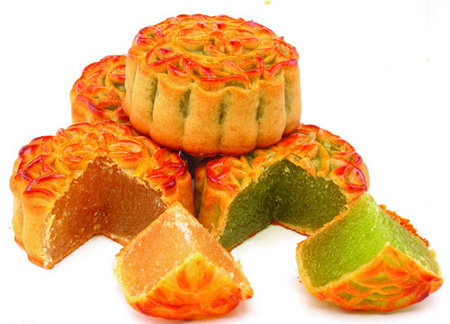
The 15th day of the eighth month of the lunar calendar is the Mid-autumn Festival in China. On this day, the whole family gathers together around the table eating moon cakes and appreciating the moonlight while praying for a peaceful future. Mid-autumn moon cake is not only an indispensable delicacy during this festival; it also represents expectations for reunion and good fortune.
Moon cake can be traced back more than 3,000 years to the Shang and Zhou dynasties, when people in today’s Jiangsu and Zhejiang provinces made a pastry named Taishi Cake in memory of Wenzhong, who had been prime minister or Taishi of the last Shang emperor. Zhang Qian (200-114 BC), the imperial envoy to the Western Regions, introduced sesame and walnut to the inland, two essential ingredients in the cake that was subsequently renamed Hubing, or walnut cake.
During the Tang Dynasty (618-907), there were more bakeries and shops making and selling such cakes. It was believed that Emperor Taizong was not fond of the name Hubing. One day, when the emperor was with his consort Lady Yang Yuhuan, one of the Four Beauties of ancient China on seeing Yang look up at the moon, he blurted out Yuebing! (moon cake) and since then the name moon cake has been used widely.
During the Northern Song Dynasty (960-1127), more ingredients were added to the cake, such as lard, egg, sugar and fruit. The taste became more refined and quite similar to what it is like today.
To the Ming Dynasty (1368-1644), moon cakes with imprints on their surface, such as that of the Goddess Chang’e flying to the moon, started to become popular, and by the Qing Dynasty (1644-1911), the craftsmanship behind making moon cakes had reached unprecedented heights.
